The 12+ Best Ways to Increase SaaS Retention in 2025

As the Software-as-a-Service (SaaS) industry continues to grow, so does the need for companies to focus on user retention and engagement. Retaining users is essential for the success of any SaaS business, as it ensures that customers don't churn and that the company maintains a healthy bottom line.
I know from my experience starting two SaaS businesses, that your retention rate will make or break your business -- seriously, it's the difference between success and failure. You should aim to churn now more than 4% of your customers per month to be "average."

If you’re churning a large portion of your customers every month, eventually it will be too difficult (or expensive) to acquire enough to replace them. As a result, you will eventually run into a growth ceiling.
There are a lot of ways to increase SaaS retention, but the most important things to focus on are the customer experience and the data behind churn. If customers are happy with your product, they're much more likely to stick around. Quite simply, nothing can replace a great product when it comes to retention.
But there are a lot of best practices that can help.
Customer Retention: a Definition
Customer retention is the act of keeping customers coming back to do business with you. Your retention rate is defined as the number of users on day “n” divided by the number of users on day 0.
So if you start with 100 customers on Jan 1, 2024 and by Jan 1, 2025 you have 60 customers, your yearly retention rate is 60% (60/100).
Note: this figure should not include any new customers. You want to look at just the cohort of customers starting on Jan 1, 2024 so that you can understand their retention. Tools like Profitwell enable you to see your monthly cohort retention rates – which is super helpful for identifying which product features and marketing actions are positively (or negatively) impacting retention.
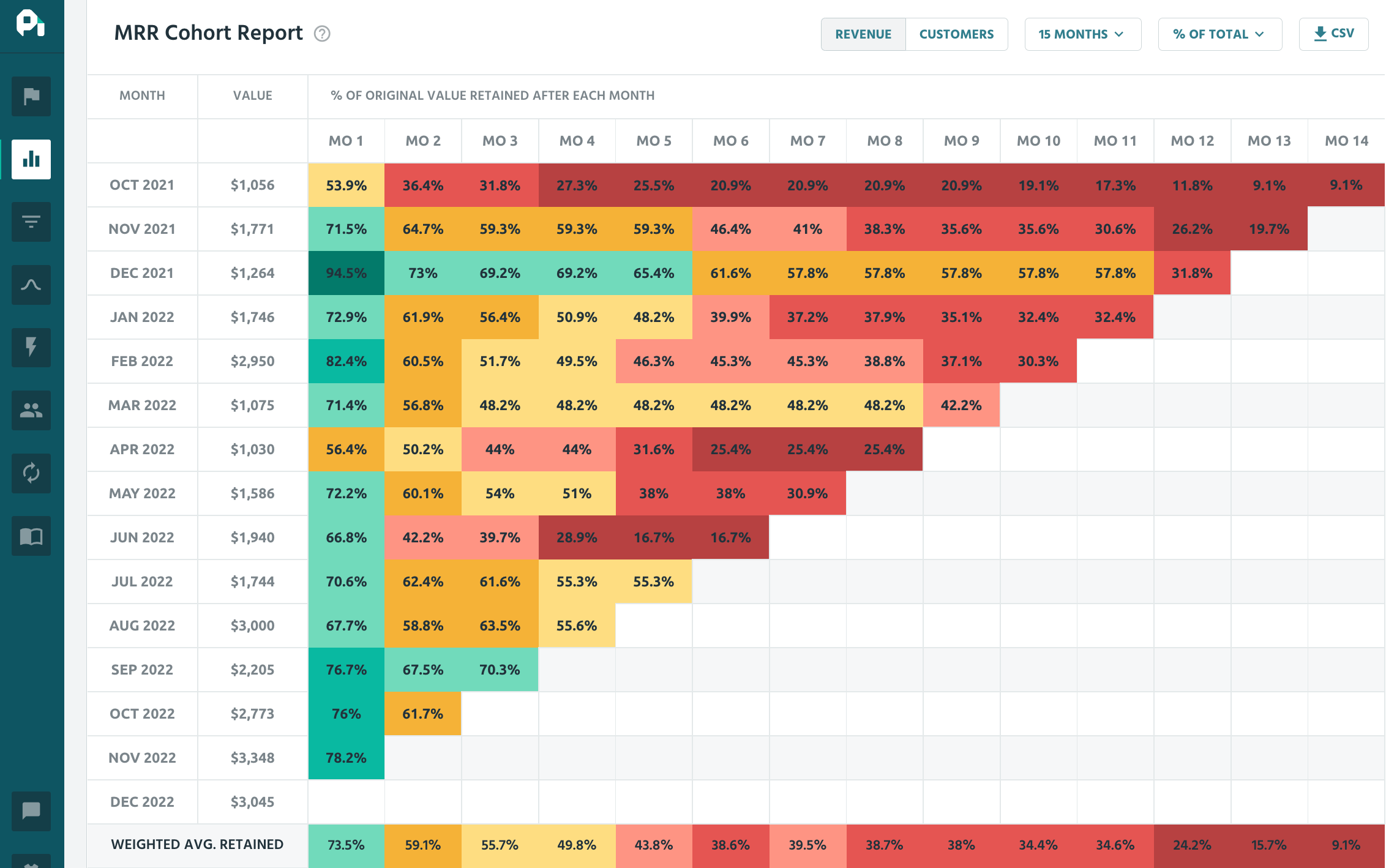
Net Revenue Retention: a Definition
But here’s a little nuance to retention rates. You can speak about retention in terms of customer retention. But you can also look at net revenue retention (NRR). Revenue retention is the amount of revenue you retain from customer cohorts over time.
This is the mathematical definition:
Sum of your revenue at the beginning of the period + expansion revenue during the period - downgraded revenue during the period - canceled revenue during the period) / (Revenue at the beginning of the period)
So for instance, say you start with $1,000 of revenue on Jan 1, 2024 and by Jan 1, 2025 you’ve had some customers upgrade their subscriptions to the tune of $300. But you’ve also had some customers churn their subscriptions to the tune of $500. Your NRR is 80% (($1,000 - $300 + $500)/$1,000).
The best B2B SaaS businesses have an NRR between 90% and 125%. Public SaaS companies like Salesforce and Okta fall into this range.
The Best Ways to Improve SaaS Retention
SaaS customer retention can save businesses money by reducing the need to constantly acquire new customers. You can continue growing your business without having to add customers every month.
SaaS customer retention is important because it allows businesses to keep their customers happy and continue using their software.
These are the best ways to increase retention:
1. Customer Attrition (Churn) Analysis
Figure out where that customer churn is coming from and you can retain more customers.
There are four ways I like to run churn analysis: phone/Zoom interviews, reading reviews, running cancellation surveys, and using a few analytical methods.
Phone/Zoom interviews
Yes, sometimes it’s painful getting on the phone, but you have to do it. It’s the only way to get empirical reviews of your product and real, free-form feedback. Simply sending out a survey is fine, but multiple-choice answers will never help you get to the root of your customer’s problems. There are too many errors in surveys and customers simply won’t take the time to think critically about their churn reasons.
In running a great Zoom interview think about doing these three things:
Interview both churned and existing customers to spot the differences in their experiences.
Listen, don’t sell. Hearing feedback about your product can be tough, but you must resist the urge to tell them why they’re wrong or direct the conversation in any one way. Awkward silences are your friend – I promise you’ll get more raw feedback if you let the customer think and speak.
Finally, there’s one question you must ask: “what could we have done to keep your business” (churned customers) or “what can we do to get you to spend more” (existing customers). Sure, they’re blunt questions, but this is how you’re going to get your answers.
Publicly available reviews
There are treasure troves of customer data online. I suggest you read your reviews on G2, Capterra, and other blogs/sites. You can usually find nuggets of wisdom in there that will help you identify the primary churn reasons. Correcting for these will improve your retention.
Don’t have a lot of reviews? Look at your competitors’ reviews. You can get some ideas about what customers love and what they don’t.
Cancellation surveys
I’ve found the most useful place to put surveys is in the cancellation flow. When a customer cancels is when they’re likely to give you an honest answer. It’s also when they remember why they churned. Believe it or not a lot of people forget even a few days later!
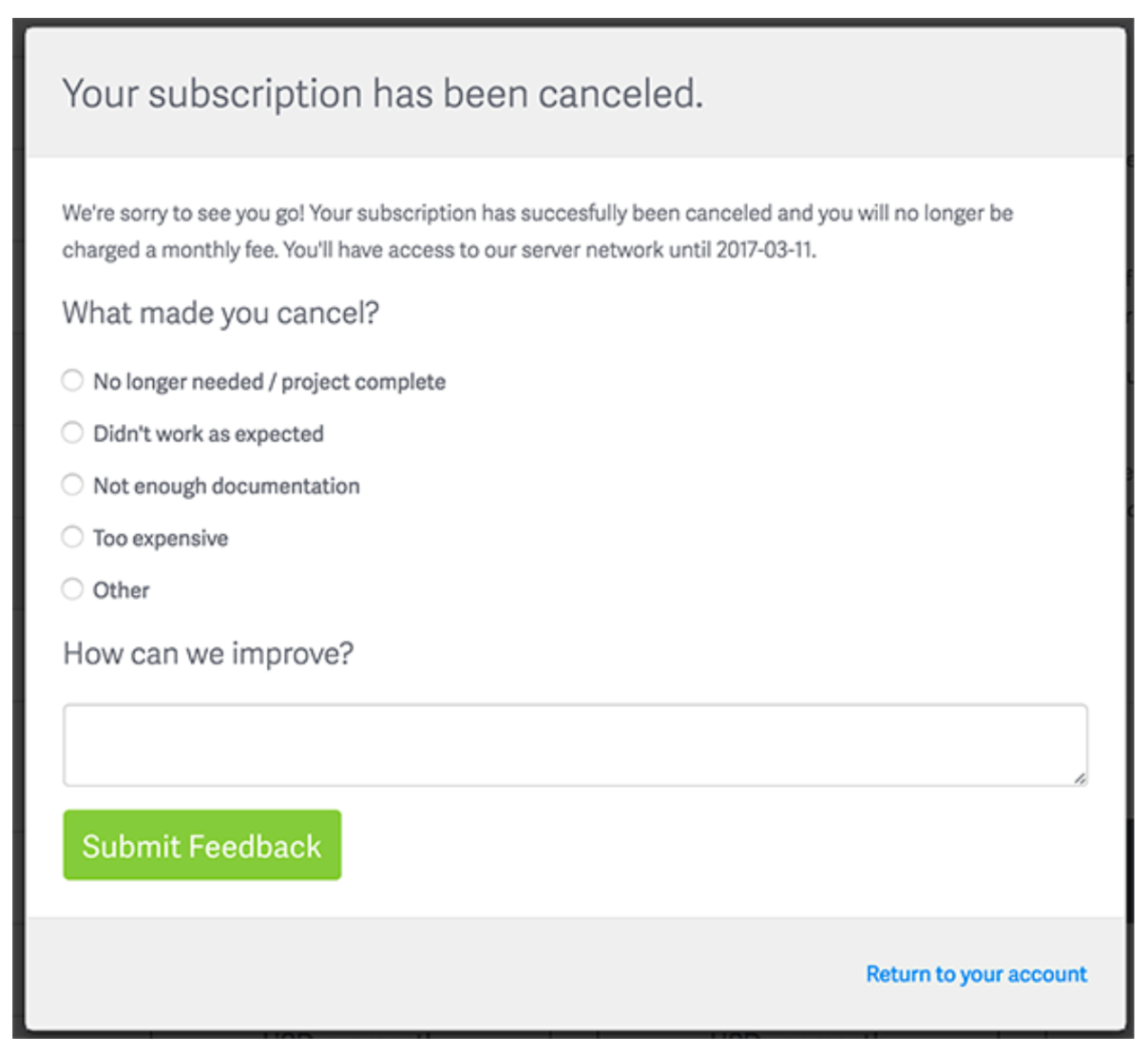
Analytics
Finally, look at your analytics when possible. If you have less than a few churning customers every month then you can do it manually. If you have big volumes of data you may need to get more sophisticated with a tool like Heap or Pendo.
Look for commonalities in churning customers. Do they work in a certain industry or have a specific job title? Did they come from a certain acquisition channel? Were they on a particular pricing plan?
Doing some analytical digging can help you to figure out which customer segments are
There are a lot of factors that can lead to customer churn, but the best way to combat it is to figure out where it's coming from. Is it a particular product that's not performing well? Is it a specific customer service issue? Once you know where the problem is, you can start to put together a plan to fix it.
2. Create an Onboarding Process that Works
No matter what you found in your churn analysis, I guarantee you’ve got plenty of opportunities to improve churn in the onboarding process.
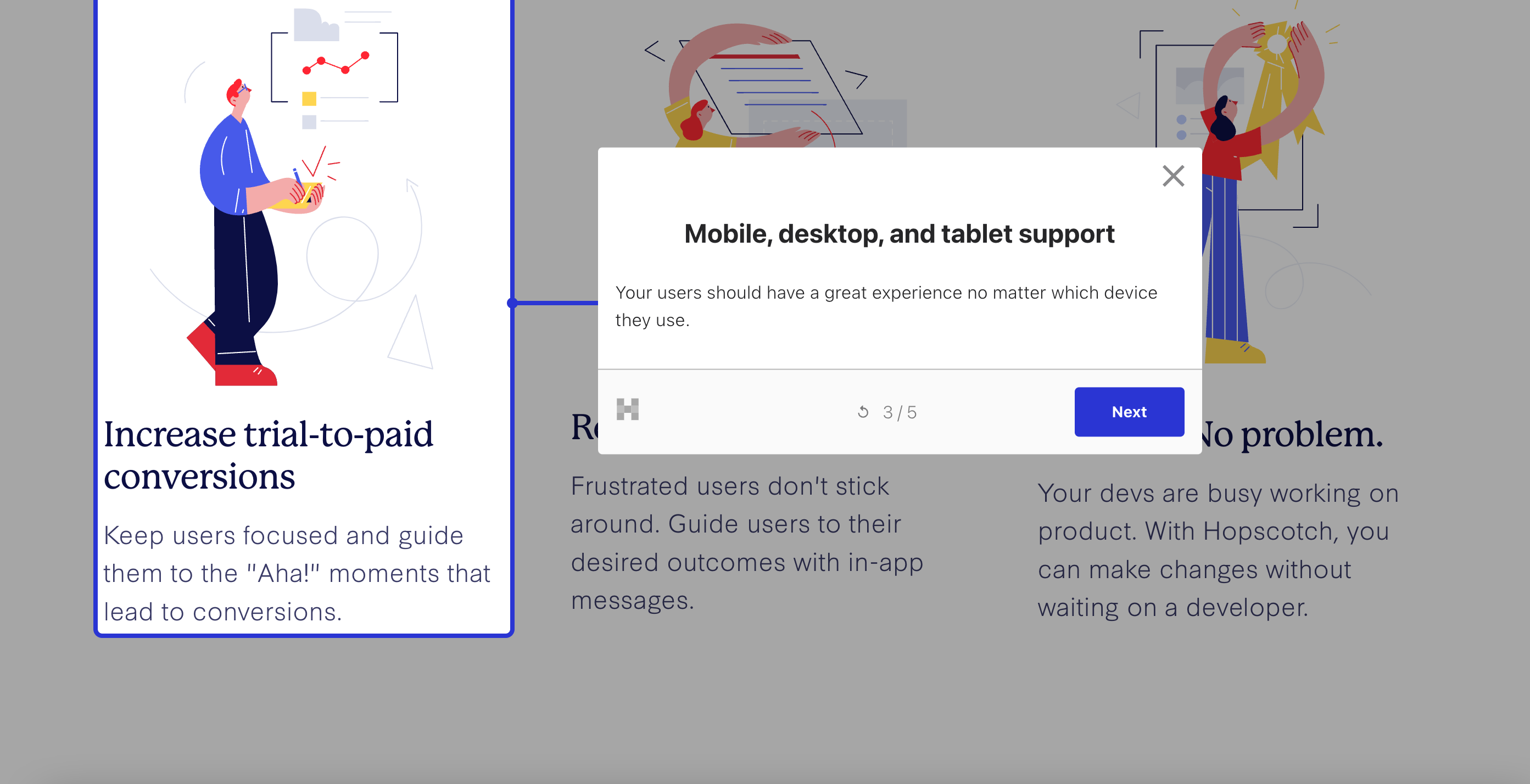
The more your customers understand your product, its use cases, and how to navigate it, the more likely they are to stay. This concept is often called “time to value” (TTV).
TTV is one of the main metrics every software service looks at. For instance, early Facebook employees noticed that users who acquired 7 friends in 10 days were far more likely to stay with the platform rather than churn. Therefore, in the early days, “7 friends in 10 days” was their single guiding metric.
Having spoken to executives at landing page software companies, their guiding metric is “time to first page publish.” If they can get someone to publish a post quickly, they’re showing value fast and that person isn’t very likely to churn.
So if you can create an onboarding process that shows value quicker, you’re headed in the right direction.
But how? There are several ways to win customers in your onboarding experience:
Micro actions and progress bars: For many product experiences you can break onboarding up into small chunks. Doing so makes the user take micro-actions or make micro-commitments. This makes it easier for them to get deeper and deeper into the product and realize value more quickly.
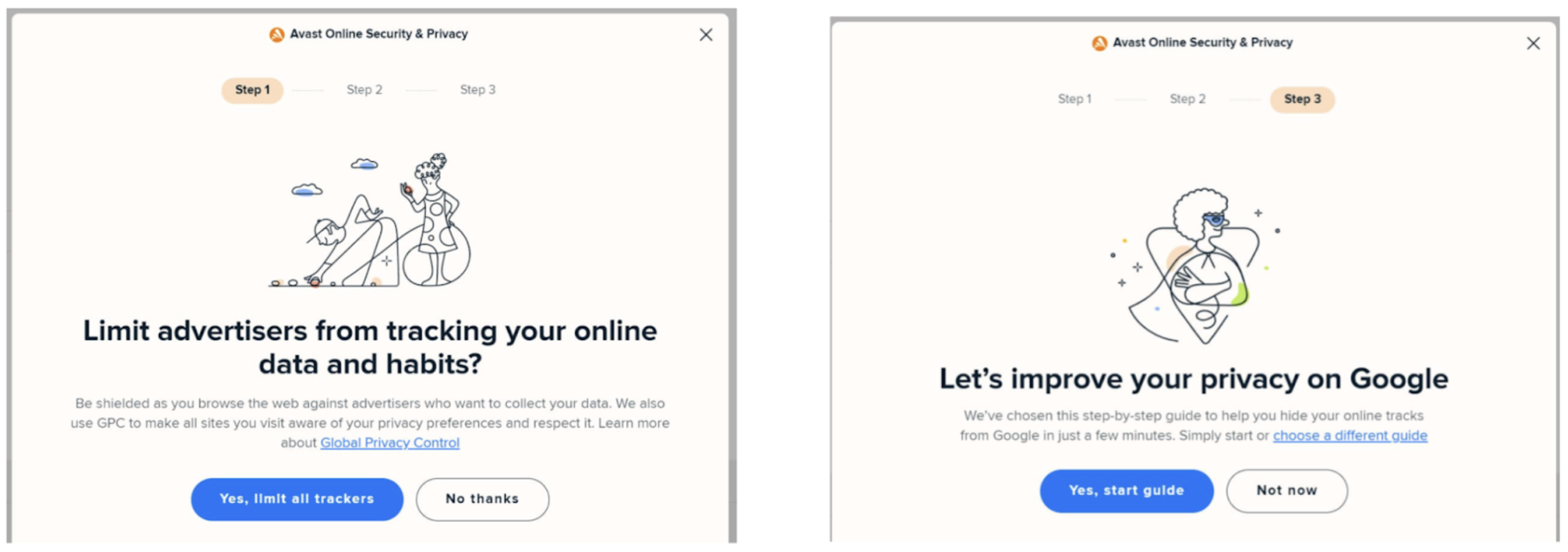
Onboarding videos: According to Wyzowl, 74% of people have watched a video to understand how to use an app or product better. The second I implemented videos into my user onboarding experience I understood why they’re so popular – immediately I saw a reduction in churn. People love the clarity that comes with a video. I think seeing a founder’s enthusiasm for the product also doesn’t hurt.
Help or information tools: Enable customers to learn at their own pace and in their own way by including “i” or help buttons on any feature that might be confusing. If you pay attention, you’ll see how many products have these learn-as-you-go features.
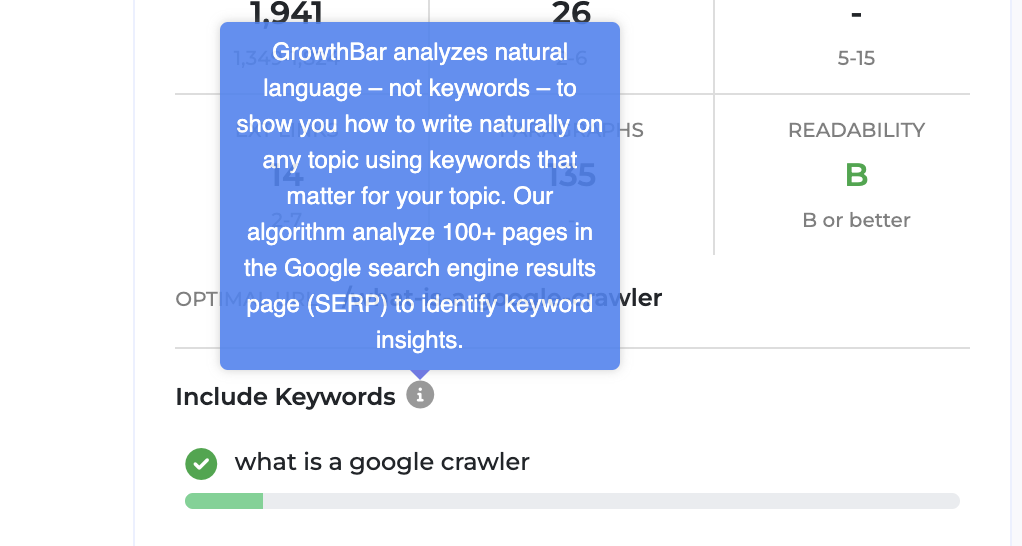
Email marketing: Email marketing still stands as one of the best ways to onboard users and show value quickly. In most cases, the first email a user gets after signing up will get the highest open and click-through rate of any email you ever send. With this in mind, make sure your first email is impactful and explains to users how to find value in the product FAST.
One-to-one onboarding: ConvertKit is famous for its concierge migrations. In the early days, founder Nathan Berry used to offer help migrating customers from more established platforms like Mailchimp. That strategy got them to their first $100k MRR and beyond. Years later they still offer the concierge migration service because of its positive impact on conversion rate and retention. Consider offering one-to-one migrations or demos to new customers.
If your product is difficult to use, customers are likely to churn – this is particularly true during onboarding. Make sure you are constantly testing and iterating on your onboarding experience to make sure it’s simple to use and quick to show value.
Want to improve your product onboarding experience?
Also read: The 9+ Best User Onboarding Tools
3. Dunning System
A dunning system is a series of automated emails that are sent to customers who are at risk of cancelation or ones whose payment method has expired. The emails provide information about the product and how to use it, as well as special offers and discounts. Or, they can be as simple as an "enter a new credit card" field email series.

The best dunning systems have optimized communications from years of data. Profitwell and Stripe both have dunning systems that help retain users when they’re about to churn.
4. Practice Secondary Onboarding
SaaS companies can increase customer retention by practicing secondary onboarding.
Secondary onboarding is the process of keeping customers engaged after they have signed up for a service or product. This can be done through regular check-ins, providing resources and support, and offering new features or discounts. By keeping customers engaged, they are more likely to continue using the service or product and remain loyal customers.
Customer analytics tools like Heap and Mixpanel, and even email tools like Intercom, can alert you when customers aren’t using the product. You can then intervene with help information, customer support, and other tools to make sure you retain them.
Another really easy way to practice secondary onboarding is with product tours. If you have a new feature or an announcement – or even a difficult-to-use feature – you can periodically remind customers how to use them and get the most value out of your product.
Want to improve your secondary product onboarding experience?
5. Cancellation Flows: Dark Patterns
It’s important to have a system in place to prevent customers from cancelation. Doing so can work wonders for your retention.
When a customer wants to cancel their subscription, they should have to go through a few hoops – not so many that they feel disrespected – but enough that they can’t cancel with one easy button click. This will give them time to think about their decision and whether they really want to cancel.
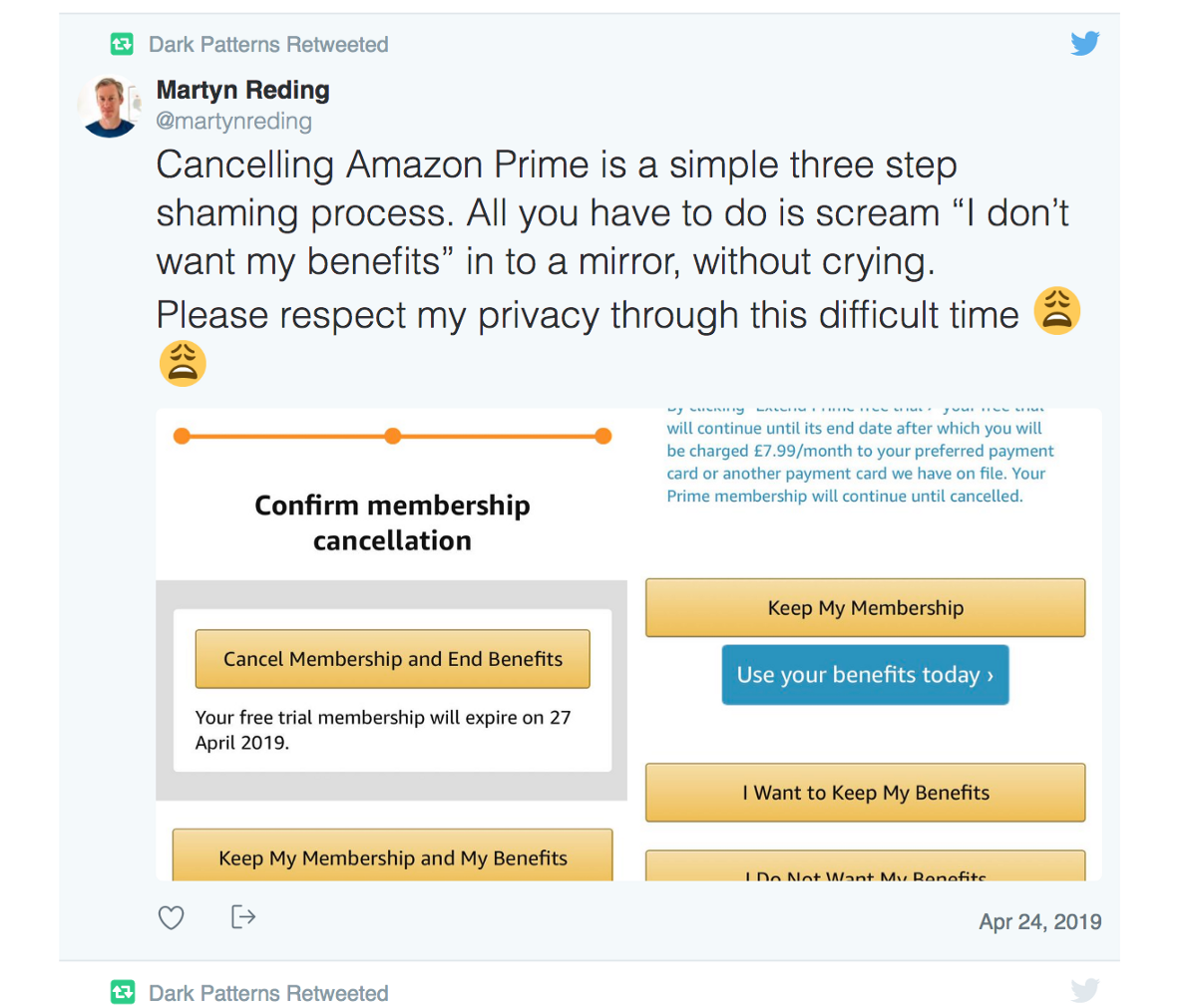
You can also offer them incentives to stay, such as discounts or freebies. If they still want to cancel, then you can let them go.
It’s important to make it a little difficult for customers to cancel because if they do, it will impact your bottom line. You don’t want to lose customers, so do whatever you can to keep them.
Some companies use dark patterns in the following ways:
Semrush actually makes you contact customer support to cancel your account.
GrowthBar makes you provide a cancellation reason before canceling your account.
Demio offers discounts and the ability to pause your account for a couple of months.
Clickfunnels flashes a video of the founder talking about why Clickfunnels is a hugely ROI-positive solution and discourages cancellation.
All these tactics ensure just a little bit of friction at cancellation to help increase retention.
6. Community
When you have a valuable community attached to your SaaS business you have a built-in group of passionate users who can help amplify your message, troubleshoot issues, and sing about the value they get from your product. The social proof of a community is a great way to increase customer retention.
Plus, a community can help you gather feedback, identify issues early on, and build a group of advocates who will help spread the word about your product. An engaged community can be a powerful tool for increasing retention and reducing churn.
7. Create Expansion Revenue
Consumer SaaS companies are historically pretty high churn. So when SEO tool, Semrush IPO'd a couple of years ago with 120%+ net revenue retention, people were impressed. Remember, that means Semrush gets 20% more from the average customer this year than they did last year. The same was true of Monday.com’s IPO.
While these SaaS businesses are essential consumer SaaS (as opposed to B2B SaaS), they’re really good at “landing and expanding.” This means that although a lot of customers churn, especially in the first couple of months – both companies are very good at getting retained customers to spend more over time. This expansion revenue increases net revenue retention.
There are a number of tried and true ways to create expansion revenue. They include:
Prompting customers to add more teammates or seats to their account – and charging more for each seat added. Most project management tools like Monday.com and Asana get expansion revenue in this way.
Upselling customers on more advanced features in higher-tier plans. Understanding which features your best customers are using is a really good way to tier your prices in a way that promotes expansion revenue. Perhaps your best customers want to integrate with other apps, or use your API, or want concierge onboarding and support. Semrush creates expansion revenue in this way.
Usage-based pricing is the concept of charging by usage. This means that customers who only use your product a little bit are charged for only a little bit, and power users pay more. What this does is keep small customers happy with a palatable bill every month, but makes your most valuable customers even more valuable, thus creating expansion revenue. Twilio is an example of a usage-based pricing model.
The secret is to interview customers and figure out what will make them pay more for your product or service.
And while it’s not exactly an expansion revenue strategy, many companies prompt customers to upgrade from monthly to yearly plans. Yearly plans have better retention than monthly because the user only sees a bill once per year. Upgrading from monthly to yearly is a form of customer value expansion.
8. Give Users More Help Documentation Than You Think They Need
A good rule of thumb is to provide three times as much documentation as you think they need. So, if you think a user needs five minutes of documentation, give them 15 minutes’ worth.
If you’re worried about giving users too much documentation, you can always give them the option to opt out of certain documentation. For example, you could have a “Getting Started” section that’s mandatory, but then let users choose whether they want to read the “Advanced Features” section.
Include help documentation anywhere and everywhere you think they need it:
In the product in various places
In your email nurture series
In a help center on your website
Via concierge onboarding and live demos
9. Get Data-Informed
Use a tool like Heap or Mixpanel to get real insights into what’s causing people to drop off. Try to segment your users by signup date, plan, channels they came from, or any other criteria that makes sense for your business. Doing this will help you identify any patterns in user behavior.
Once you have a better understanding of why people are leaving, you can start to put together a plan to improve retention. If you see that people are dropping off shortly after signup, you might want to focus on improving your onboarding process. If you see people are sticking around for a while but then leaving after they hit a certain usage milestone, you might need to work on engagement.
10. Support Foreign Languages
Take a look at your analytics tool that gives you geo data. For instance, in Google Analytics, you can see which countries users are coming from. One of the easiest ways to retain more of your users is to translate your help documentation – and perhaps even your entire app – into the most popular foreign languages that are using your app.
I say this is simple because you can go on Upwork or Fiverr and find someone to translate your documents for you for very cheap.
11. Live Chat In-App
Most people think about live chat on their logged-out marketing site. And it definitely works. Live chat can increase conversion rate by up to 20% on-site. But it can also work to increase customer retention in your app as well.
How many times have you been inside an app and you had a question? If you can’t quickly find the answer, sometimes it’s enough to make you quit on the app altogether. In-app live chat can remedy that churn by providing on-demand support.
And the good news is you don’t necessarily need someone to man your live chat all the time. Sometimes it’s enough to set up a small chatbot experience that asks the users a few questions and directs them to the correct help documentation.
Wrapping Up
Remember, increasing retention is multifaceted. There’s almost never one silver bullet, but rather many smaller actions you can take to increase your SaaS retention.
Your process should definitely start with data in the form of surveys, cancellation reasons, and customer interviews. This will arm you with the information you need to make informed guesses about what will actually move the needle.
After you gather the information, there are a number of tactical processes to put in place to improve your retention, including a dunning system, secondary onboarding, dark patterns, robust help information, and support for foreign languages.
And don’t forget to focus on revenue retention. Retaining users isn’t the goal, retaining revenue is. So even if you have a high-ish churn rate, look to your best users. The better you can support them, the better your NRR will be.
Most of all, stay hungry. No successful SaaS is built overnight. It will take a lot of chipping away to reduce churn and improve retention.
📚 Read More
Convert more trials with Hopscotch
Simple and delightful onboarding tours your users will love.

